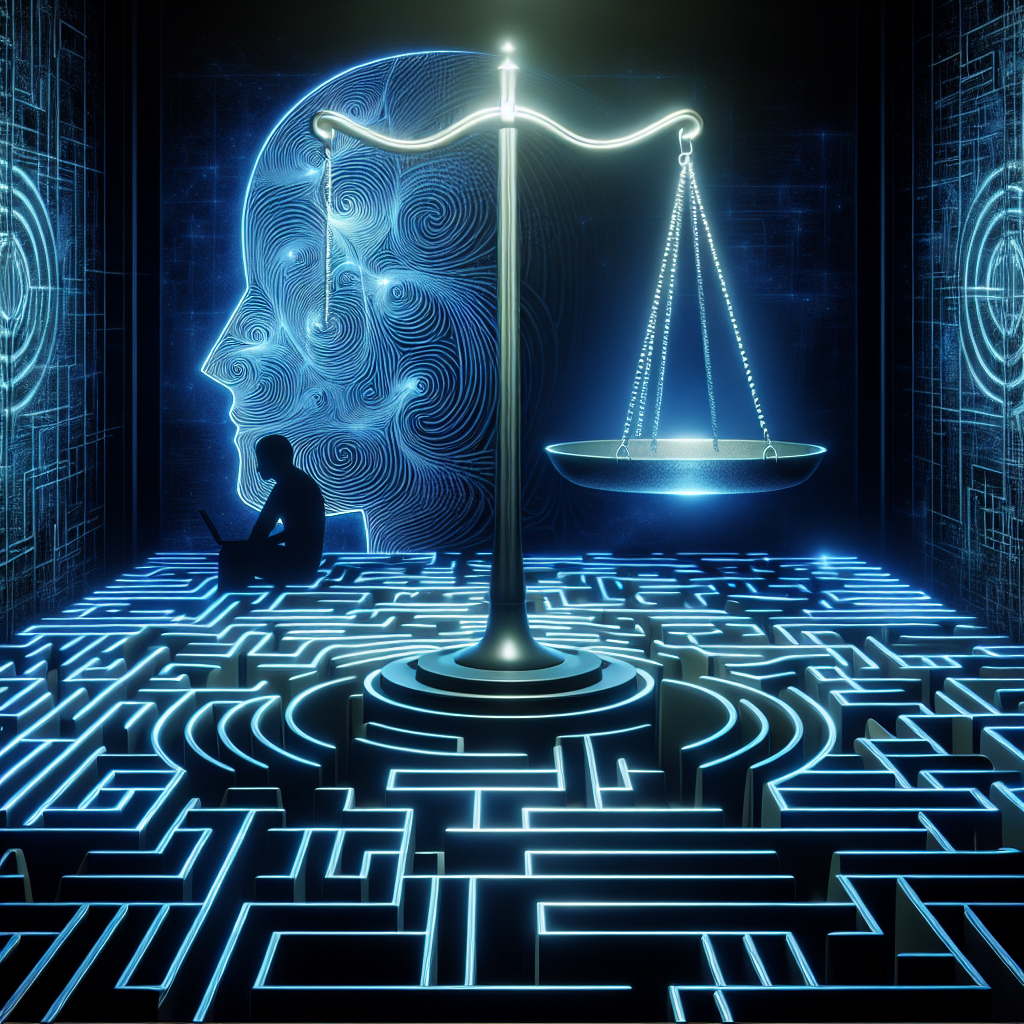Introduction
As artificial intelligence (AI) advances swiftly, becoming more integrated into our lives, it introduces a range of significant ethical challenges. While AI has the capacity to transform industries, enhance decision-making, and elevate quality of life, it also prompts crucial questions concerning morality, accountability, and the essence of humanity. As we traverse this complex landscape, it is vital to define our boundaries.
Understanding Moral Compass in AI
A moral compass is essential for ethical decision-making, helping to differentiate right from wrong. In the context of AI, this concept becomes particularly intricate. Unlike humans, AI does not possess inherent moral comprehension; it operates through algorithms and datasets imbued with human biases and values. Therefore, the moral compass of AI essentially mirrors the ethical frameworks established by its creators and the society that utilizes it.
Key Ethical Frameworks
-
Utilitarianism:
- Definition: This principle aims for the greatest good for the greatest number.
- Application in AI: Utilitarian algorithms focus on optimizing results based on collective benefits. For example, AI in healthcare can analyze large datasets to enhance patient outcomes. However, focusing solely on efficiency may lead to overlooking marginalized groups, raising concerns about equitable treatment.
-
Deontology:
- Definition: This ethical theory posits that certain actions are morally necessary, irrespective of their consequences.
- Application in AI: A deontological viewpoint underscores the significance of rights and responsibilities. In the realm of AI, this translates to developing systems that uphold privacy and fairness. Implementing these principles proves challenging, as data use often conflicts with individual rights, necessitating clear guidelines.
- Virtue Ethics:
- Definition: This approach prioritizes the character traits of individuals making ethical choices over the rules they adhere to.
- Application in AI: Virtue ethics advocates for AI developers to embody values like empathy and responsibility in their designs. This perspective encourages us to consider the moral character of AI systems as extensions of their creators.
Ethical Dilemmas and Considerations
Accountability
A major challenge within AI ethics is pinpointing accountability when AI systems inflict harm. In the event of an accident involving an autonomous vehicle, who bears responsibility: the manufacturer, the software developer, or the user? The absence of clear accountability can impede the acceptance of AI technologies and present notable legal and ethical issues.
Bias and Fairness
AI systems derive insights from historical data, which frequently embeds societal biases. For instance, facial recognition technologies may misidentify individuals from marginalized communities, resulting in discriminatory outcomes. Ensuring fairness demands continuous efforts to audit AI systems, rectify biases, and maintain diverse datasets to foster more equitable algorithms.
Surveillance and Privacy
The surveillance capabilities of AI provoke urgent questions regarding privacy rights and the extent to which society is comfortable with monitoring for perceived safety. The boundary between public safety and personal freedom grows increasingly indistinct as AI technologies become more prevalent. Achieving a balance between security and privacy is crucial.
The Role of Regulation
Establishing a framework for the ethical deployment of AI is vital. Policymakers, technologists, ethicists, and civil society need to collaborate to formulate regulations that emphasize human welfare. This might involve developing guidelines for transparency, accountability, and inclusivity in AI systems. The European Union’s General Data Protection Regulation (GDPR) serves as a template for how laws can be structured to address these issues.
The Future of AI Ethics
As AI technology continues to progress, our comprehension of its moral implications must also evolve. Innovations in technology call for ongoing dialogue and flexible ethical frameworks capable of addressing emerging challenges. Educational institutions, industry leaders, and governments must collaborate to enhance ethical AI literacy, ensuring a well-informed populace that can engage with these pressing matters.
Conclusion
The moral compass of artificial intelligence is a nuanced and evolving concern. Determining the boundaries for the ethical operation of AI necessitates a multifaceted strategy that incorporates diverse perspectives and frameworks. As we find ourselves at the intersection of technology and ethics, it is essential to nurture an environment where AI serves humanity while safeguarding fundamental values. Through cooperative dialogue and prudent regulation, we can navigate this uncharted landscape, ensuring that AI remains a force for good in our society.

